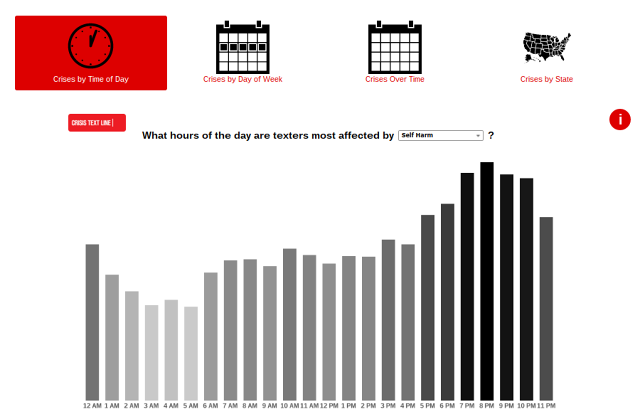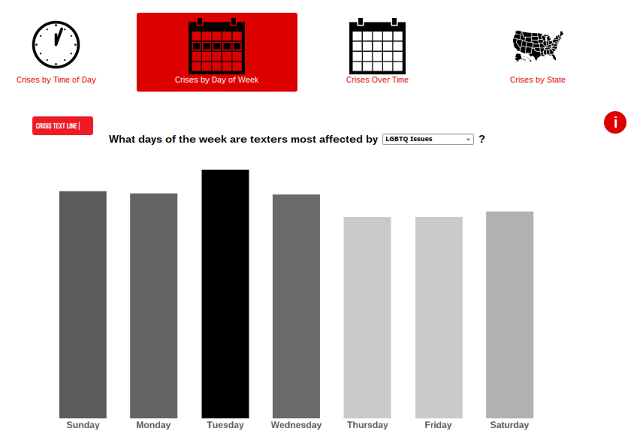challenge textual content Line Is Opening Its Treasure Trove of information To Researchers
obstacle textual content Line (CTL) is sitting on a tremendous amount of information that, analyzed, may assist save lives. due to the fact that its launch in 2013, the nonprofit has acquired greater than 13 million text messages from folks, mostly teens, from far and wide the united states who want assist of their second of darkness. customers can text any time, about anything, from self-harm to romantic relationships, household considerations to eating disorders, and get an immediate response from a reside drawback counselor.
Now, CTL says it finally plans to do what it had in mind from the start: Share its knowledge with researchers who may use it for good. “for those who do analysis in mental health or linguistics or neuroscience or sociology or any of those fields, and you wish to have to do primary research, you mainly need to create your personal find out about,” says founder and CEO Nancy Lublin. “you have to spend the time and money and a couple of years and hundreds of hundreds of dollars to create a knowledge corpus like this. as an alternative, we’re making it on hand without spending a dime. that is going to save lots of a lot time and so much cash for people doing necessary work.”

Why open the floodgates now? For Lublin and CTL, consumer privateness is the number-one priority, and it used to be best recently that she felt the data set was big enough to be meaningful whereas additionally making certain anonymity. determining important points like names, addresses, and birthdays will probably be strategically scrubbed from the information before it’s shared with researchers. here’s how the website online’s FAQ part describes the method: “as an example, if we scrub the identify Tiffany, we substitute it with Sam. accordingly, all knowledge becomes effectively anonymous, in that it’s not that you can imagine to see what for my part identifiable information has been changed or now not.”
nonetheless, the concept of sharing such sensitive information about teenagers in their most prone moments is surrounded with ethical purple tape. Lublin and her team spent the final 12 months forming an Ethics Committee to recommend the right way to do it responsibly. they usually’re now not just letting any researcher get entry to the data: the application course of is stringent and places the onus on the researchers to prove they’re using the info for just right. CTL guarantees the info won’t ever be offered for business use, and government agencies don’t get any different get admission to, both. “There are plenty of hurdles here,” Lublin says. “We’re being very, very cautious, and we know that’s gonna block some research, however we’d somewhat be protected. Our primary intention is to help individuals.”

as soon as researchers are given the go-in advance, they are able to use the data to make clear traits like where crises spike on vacation trips, or dive deep into the context of a conversation to examine what kinds of phrases teens use to explain their experience with bullying or depression. anything they uncover should be shared with the rest of the CTL community so its 1,500 counselors (which Lublin needs to look develop to three,000 via the end of 2016) can research from it.
Already, the website online has surfaced a large number of unexpected takeaways. as an example, consuming dysfunction crises spike on Sundays. “That shocked me,” Lublin says. “To me, that’s like, hiya households, be aware of this. Don’t just suppose the school steerage counselor is gonna care for this for you.” also, reports of self-harm happen during the day, that means teens are cutting themselves in public places, in school or at work, now not simply in the privacy of their very own bedrooms. that would prompt academics and employers to be looking out and intervene. The college of Utah wants to understand how location altitude influences substance abuse. “That’s gonna be attention-grabbing,” Lublin says. “Is there any relationship there?”

applications are already rolling in, and a brand new batch of researchers will probably be authorized once 1 / 4. “We’re just hoping this cascades and creates a tidal wave of good research, good journalism, smarter regulation, smart policing, and good faculty boards,” says Lublin.
(27)












